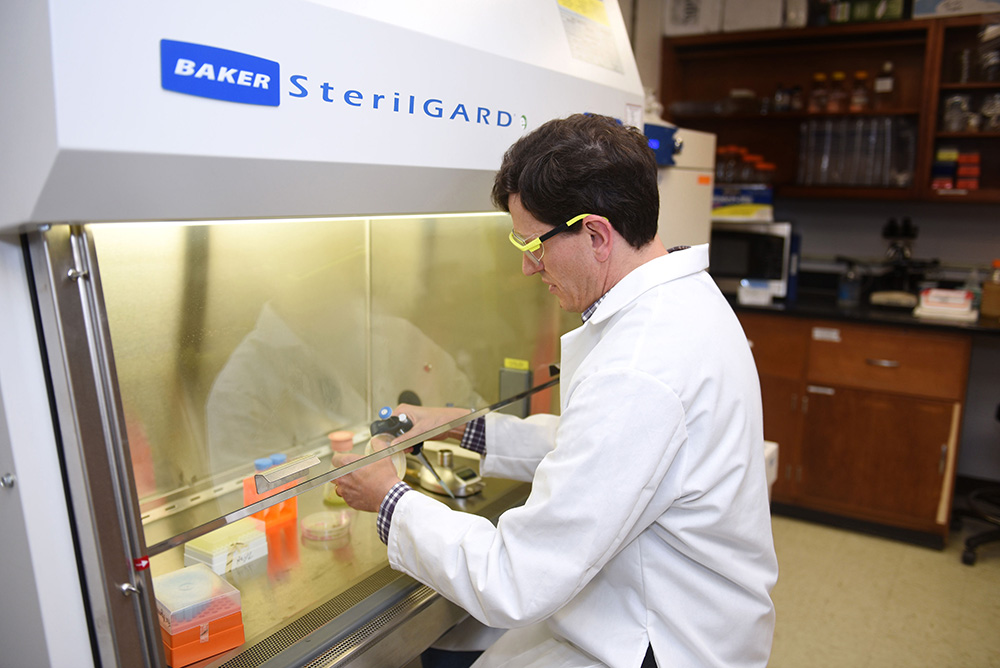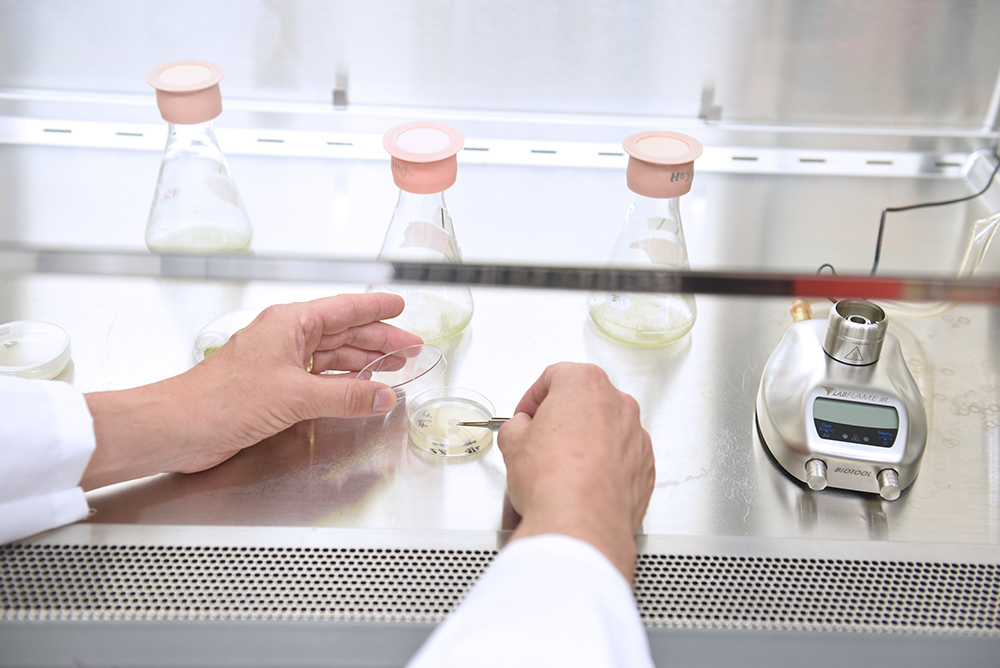Alexander Heyl, PhD, is researching the evolution and functioning of signaling pathways, particularly in the origin of a class of plant hormones called cytokinins. He holds a PhD from the University of Cologne, Germany.

Alexander Heyl, PhD, is researching the evolution and functioning of signaling pathways, particularly in the origin of a class of plant hormones called cytokinins. He holds a PhD from the University of Cologne, Germany.
More than 500 million years ago, at the beginning of the Paleozoic era, dry land was utterly barren, little more than storm-lashed rock, sand and dirt. The seas, however, teemed with life, ranging from ancient forms like single-cell bacteria to complex, newly appearing forms like fish. But the first organism with the get-up-and-go to colonize the land? The humble algae.
Thanks to groundbreaking research by Alexander Heyl, PhD, assistant professor of biology, and his colleagues, we now have a better understanding of how algae may have turned conqueror. Dr. Heyl and his collaborators recently sequenced and annotated the genome of an algae known as Chara braunii. Because this algae is part of the group Charophyta—the group of algae that colonized the land—understanding the species’ current genetic profile could offer insight into the evolutionary record.
“If you take a fish to dry land,” Dr. Heyl explained, “it’s not going to do very well. It’s the same with plants. We wanted to understand how plants came to land.” The earth’s surface is a hostile environment for plants that evolved in the sea. The sun’s ultraviolet radiation, for instance, is just as threatening to unadapted plants as it is to humans. Even the force of gravity is absorbed differently on land, requiring novel adaptations for plants to survive. Dr. Heyl was curious about a particular aspect of adaptation: “What does it take to develop a hormone system to live on land?”

Alexander Heyl, PhD, examined an algae’s genome for evidence of cytokinin—the hormone that helps land plants respond to daylight.
Sequencing the data was straightforward due to recent technological innovations, so Dr. Heyl’s mission became “figuring out what all the data mean.” The project’s leader, Stefan Rensing, PhD, professor of biology at the Philipps University of Marburg, in Germany, asked scientists around the world to analyze the genome through the lens of their particular expertise. Together, the team of scientists then published their findings in “The Chara Genome: Secondary Complexity and Implications for Plant Terrestrialization,” which appeared in the July 12, 2018, issue of the leading scientific journal Cell.
[pullquote direction=”right”] “If you take a fish to dry land, it’s not going to do very well. It’s the same with plants. We wanted to understand how plants came to land.”[/pullquote]
Dr. Heyl scoured the genome for evidence of cytokinin, the hormone that helps plants on land respond to changes in sunlight, defend against predators, grow and perform many other functions. “We know which amino acids are important and which are not,” he said, explaining which genetic sequences he sought. But what he found surprised and puzzled him: while he discovered genes for the production of cytokinin, he didn’t find ones for the group of protein regulators believed to be essential to utilizing the hormone. “The question is,” Dr. Heyl said, “do these plants actually react to cytokinin?
Many explanations remain plausible. Unlike in animals, where hormones usually perform only one or two simple functions, “plant hormones are multitaskers,” Dr. Heyl said. The missing regulators may indicate, then, that Chara braunii put cytokinin to purposes different from those of the algae’s modern descendants.
Additional research will be required to discover the evolutionary process that led to the initial development of this and other hormones. Dr. Heyl hypothesizes that existing hormones in the original charophytic algae at some point started to perform new tasks. When these new functions were well established in the life of the plant, the hormones slowly changed in a process of specialization that eventually produced new hormones.
To test this and other hypotheses, Dr. Heyl plans to experiment on mosses, some of the most primitive land plants on earth. In its genome, he hopes to find clues that will flesh out the still-breaking story of algae’s colonization of land.
“There’s a race to study the ancestors of plants,” Dr. Heyl said.
For further information, please contact:
Todd Wilson
Strategic Communications Director
p – 516.237.8634
e – twilson@adelphi.edu